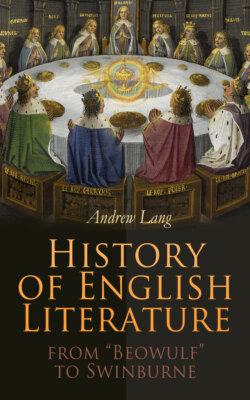Читать книгу History of English Literature from "Beowulf" to Swinburne - Andrew Lang, Robert Kirk - Страница 37
На сайте Литреса книга снята с продажи.
Ancren Riwle.
ОглавлениеAmong the works of this period which were useful or pleasant in their day, the longest book in prose is the "Ancren Riwle," or "Rule of Anchoresses," ladies who were not exactly female solitaries, but lived together religiously, each with her maid. The author, whoever he may have been, bids them say, if any one inquires, that they are "of the Order of St. James". There was no such Order, but St. James bids us visit the widow and the orphan, and keep ourselves unspotted from the world. This, says he, is true religion. The three ladies dwelt together at Tarente in Dorset. The language is of the same period as Layamon's "Brut," very early in the thirteenth century. The style is simple and free from decoration, the dialect is that of western England. The advice to the ladies is excellently pious; no severe austerities are recommended, except silence at meals. An anchoress "should not speak with any man often or long," and should have a witness (probably out of ear-shot), even when she confesses, since "the innocent are often belied for want of a witness". Flirting, and belief in luck and in dreams and witchcraft, are severely reprobated. Scepticism is attributed to intellectual pride. "Wear no iron" (James IV wore an iron girdle under his clothes), "nor hair cloth, nor hedgehog skins"; the ladies are not to flog themselves, unless their confessor permits, and their shoes are to be thick and warm. The author remarks that, God knows, he would rather set out on a voyage to Rome than write his book over again: he may have feared that the ladies would lose their copy.
Other religious books of the time are the "Poema Morale," in lines of fourteen syllables ending in a double rhyme, as lorè, morè, deedè, redè, and a new metrical paraphrase of Genesis and Exodus. The story is told with some vivacity, in rhyming couplets of eight syllables.
The drempte pharaoh king a drem
That he stod by the flodes strem
And the then ut come VII neat
Everile wel swithe fet and gret,
And VII lene after the.
In places the metre of Coleridge's "Christabel," which was the model of Scott's "Lay of the Last Minstrel," is recognized in the casual couplets, thus:—
For sextenè yer Joseph was old
Quane he was into Egypte sold.
But it is a far cry from this to
The feast was over in Branksome tower;
and the metre, when Scott's "Lay" appeared, seemed to be a novelty.
